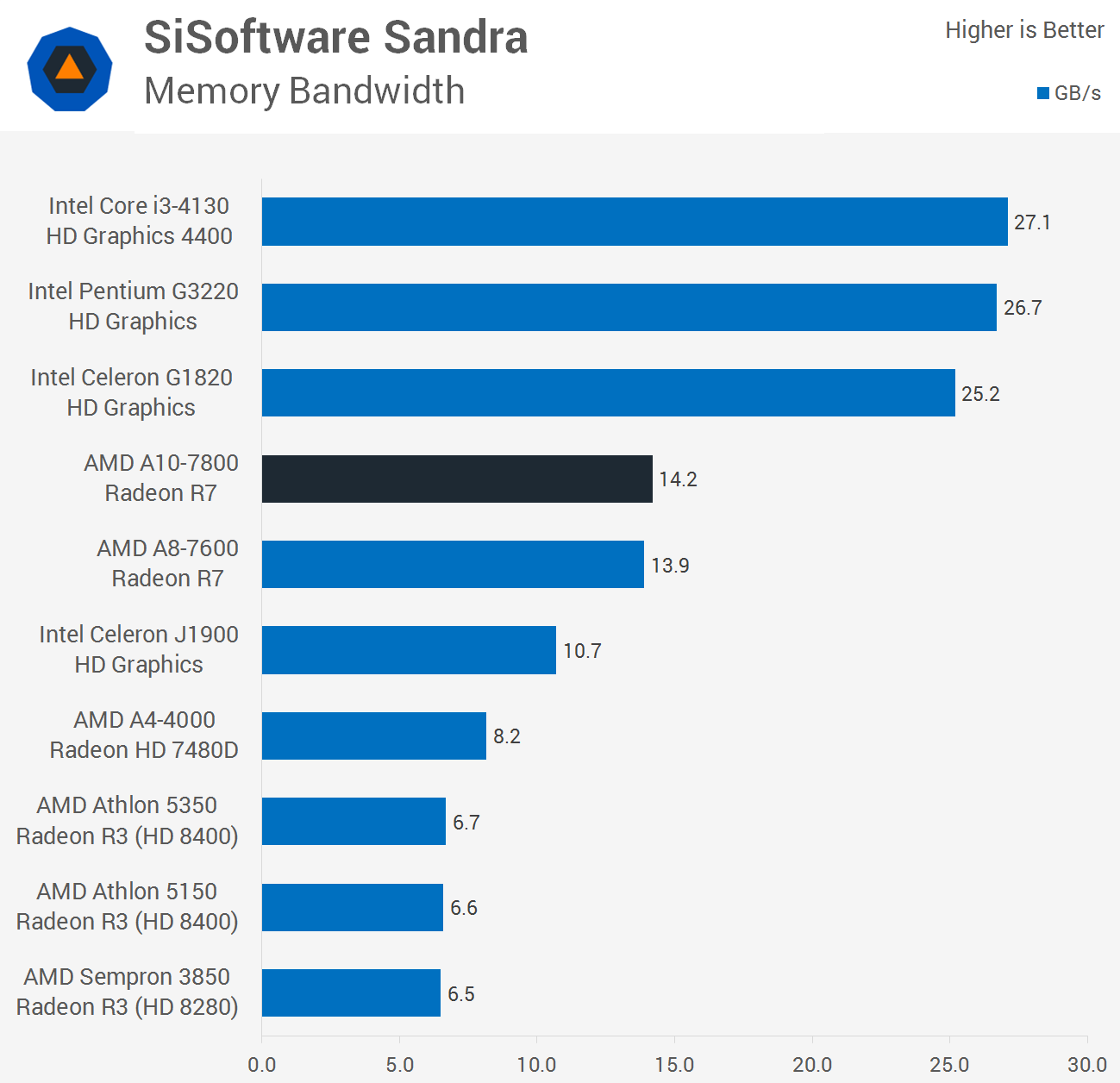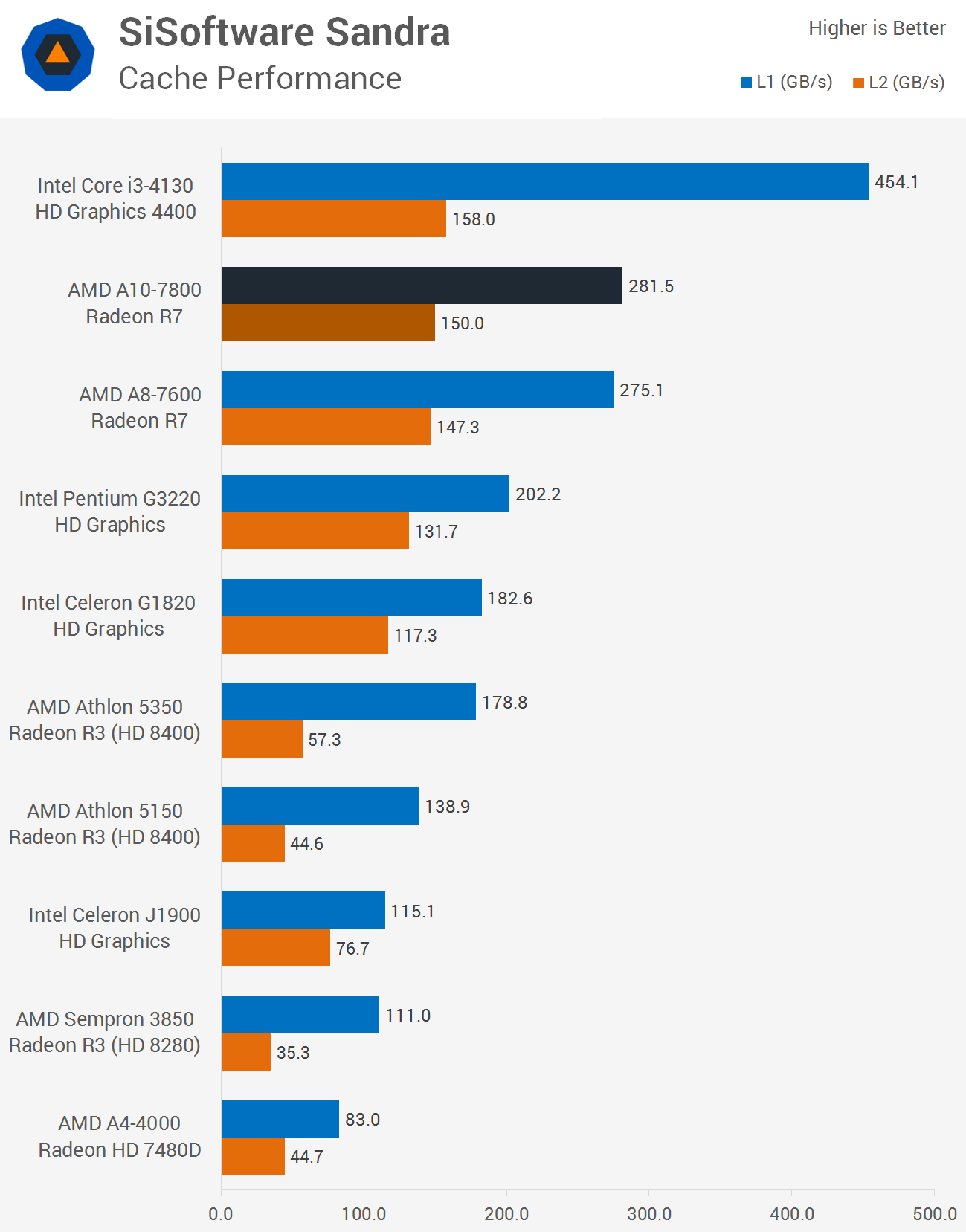Although AMD promised many new APUs when unveiling its Kaveri architecture in January, the company's lineup has been limited to the $160 A10-7700K and $170 A10-7850K, with no retail appearance by the A8-7600 that we tested seven months ago or any other budget Kaveri chips for that matter.
It's a little confusing to see the company pitching an updated version of a product range that was never properly launched but on the bright side, AMD's Kaveri update seems a little more substantial than Intel's recent Haswell refresh, if only for the fact that the A8-7600 is finally set to appear at retail.
Along with the A8-7600 due to arrive for $100, AMD is also shipping the $77 A6-7400K and $155 A10-7800, the latter of which being noteworthy because it has 45/65W TDP modes like the A8-7600 except it gets a full-blown R7 GPU featuring 8 CUs with 512 SPUs and 32 TAUs like the unlocked A10-7850K.
| A10-7850K | A10-7800 | A10-7700K | A8-7600 | A6-7400K | |
| Compute Cores | 12 (4 CPU + 8 GPU) |
12 (4 CPU + 8 GPU) |
10 (4 CPU + 6 GPU) |
10 (4 CPU + 6 GPU) |
6 (2 CPU + 4 GPU) |
| Max Turbo / CPU Frequency | 4.0/3.7GHz | 3.9/3.5GHz | 3.8/3.4GHz | 3.8/3.1GHz | 3.9/3.5GHz |
| HSA Features | Yes | Yes | Yes | Yes | Yes |
| AMD TrueAudio | Yes | Yes | Yes | Yes | Yes |
| Mantle Support | Yes | Yes | Yes | Yes | Yes |
| AMD Configurable TDP | Yes | Optimized (45w) | Yes | Optimized (45w) | Optimized (45w) |
| Suggested Configuration | Radeon R9 270, A88X, 8GB DDR3-2400 | Radeon R7 265, A88X, 8GB DDR3-2133 | Radeon R7 260X, A78, 8GB DDR3-2133 | Radeon R7 260, A78, 8GB DDR3-2133 | A58, 8GB DDR3-1866 |
| Price | $173 | $155 | $153 | $101 | $77 |
All models support DDR3-2133 memory along with the new Socket FM2+ with chipset support for PCIe 3.0. Since Kaveri brings some pretty significant changes, it's unsurprising that a socket update was in order.
Rather than go over the Kaveri architecture again, please refer back to our article published in January. With that said, let's jump right into testing.
System Specs & Memory Bandwidth
|
|
||
|

The AMD A10-7800 was tested using dual-channel DDR3-2133 memory which allowed for a bandwidth of 14.2GB/s, slightly faster than what we saw from the A8-7600.

The A10-7800's cache performance is also very similar to the A8-7600 while its L1 cache is considerably slower than the Core i3-4130's.
